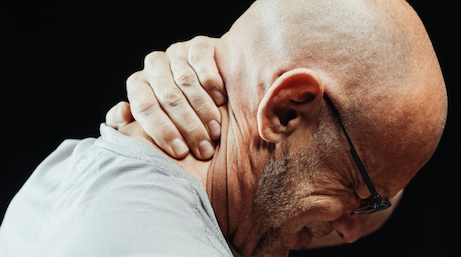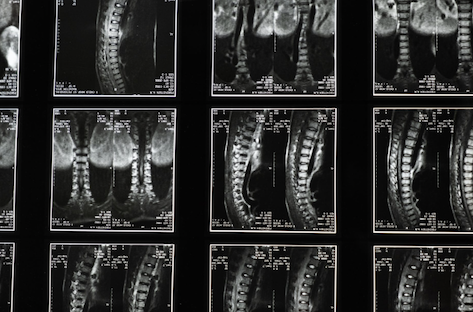6 Little-Known Tips For Relieving Pain From Herniated Discs
2022.02.09
Your spine is the pillar of your body, carrying practically the weight and pressure of everything you do. Sprain injuries can have long-lasting and painful consequences for most, and any rupture may leave you in a wheelchair. Fortunately, the most common spine injuries people suffer, except the pain, do not have such devastating outcomes, though they are causing you everyday trouble and numbness.

A herniated disc, according to recent statistics, is the most common kind of back problem people endure. Practically, what happens is the gel-like part between the discs leaks out, like the jelly from a squeezed donut, causing you pain, numbness in the leg, trouble sleeping, and other issues.
The pain can vary from mild to sharp, and often makes people highly uncomfortable and anxious. It can cause problems during mild exercise when working behind the desk and even sleeping. Therefore, we summed up some useful tips on how to easily reduce and relieve the pain caused by this condition.
Hot and Cold
First of all, you have to see a doctor for a more precise diagnosis of the condition. For severe cases, any kind of home remedy might not be effective enough and therefore prescribed therapy will give much better results.
To relieve inflammation and discomfort in mild cases, use hot and cold water, ice packs, or linings.
Hot water is known to reduce the amount of numbness you feel, by fastening the blood flow and circulation in the area. It also can stop the spasm you feel and improve the flexibility of the connecting tissue.
Cold water, ice bags, or even gels with cooling effects usually have anti-inflammatory properties. Ice has been used for millennia to reduce swelling of affected tissues and the redness caused by inflammation. You can take from time to time an ice bath as they have many different benefits despite the relief of pain caused by the disc. Try using different gels with cooling effects, as you can apply them moderately in circular motions and mildly massage the affected area for a better result.
Appropriate sleeping position
The problem with a herniated disc is the trouble you’ll have while finding the right sleeping position.
The catch is to put yourself in the most appropriate and natural sleeping position, which will not worsen the condition. Especially if the leaked part is pushing a nerve down the spine, you might have mild spasms and pain going down your leg. First, lay normally on your back and roll over to the side, without any sudden maneuvers or sharp movements. Second, try to raise your knees closer to the chest and slowly curl over. Change the position, or side, from time to time and make sure to be extra careful.
It is important to have a comfortable mattress or bed to relieve the pain and have extra cushioning to prevent numbness in other parts of the upper body, like the shoulders or neck. Basically, a soft mattress will put extra pressure on the spine, and a really hard one might cause problems to your hips and shoulders, therefore the best mattress for herniated disc is something in between a flexible and partially firm mattress. They keep the spine in alignment without putting too much pressure on other parts of the body. Remember, quality sleep will have a great influence on your overall recovery and will soothe your pain.
It is important not to worsen the already existing condition, which many people do out of negligence.
Mild exercises
If we are talking of a lumbar herniated disc, maybe mild forms of exercise might help reduce the inflammation and amount of pain you feel. As you work out, the blood flow increases, and certain hormones are released, which will help your mental state and reduce drastically the pain you are feeling. You’ll have to focus on activities that essentially do not put more pressure on the lower back part, like riding a bike or mild walking. Avoid running, lifting heavy weights, or going up and down the stairs too much as this can cause further complications. The best prevention might be staying fit and in shape, sitting or standing correctly, and avoiding lifting anything with a curved back. Curving the spine too much under weight and pressure will cause a rupture and let the disc leak out.

Painkillers
Painkillers like ibuprofen and paracetamol are non-opioid and harmless and might reduce inflammation and pain. The downside of using over-the-counter painkillers over a longer period of time is the side effects. They can cause liver damage and ulcer cancer, or damage the inner lining of the stomach.
Painkillers like oxycodone acetaminophen are known to cause mild forms of addiction, therefore stay away from the pills unless there is a real need.
Physical therapy
Physical therapy is an essential part of the long process of recovery. A therapist can locate the pain and teach you what exercises to do in order to relieve it. They can also apply mild electric massage to improve the blood flow and reduce the spasm. A certified therapist might help you get back on your feet.
Invasive procedure
Unfortunately, the most successful kind of treatment to relieve the pain forever and make sure you can live a normal life like the one before the condition is surgery. Though it is an invasive procedure, it has proven to be the best method so far.
Discectomy, or nowadays microdiscectomy, is the least invasive of the procedures and is only used for discs in the lumbar part. Through a small incision, the part of the disc which is putting pressure on the nerve and causing pain is removed, releasing the pressure on the nerve and reducing the pain.
Artificial disc replacement, on the other hand, is used in cases where a small procedure won’t do you any good. During this procedure, you’ll be under general anesthesia and the surgeon will cut through the abdomen and replace the damaged disc with an artificial one. The downside is staying in the hospital for several days and maybe a full recovery within months.
Spinal fusion, as the name suggests, is a procedure involving general anesthesia and fusing two vertebrae or more together forever. The downside is the complete immobility of the part of the spine for the rest of your life, and often rods and screws are put in to stabilize and fix the spine.
The effectiveness of surgeries depends on the kind of condition you have, and some procedures are not applicable if you have osteoporosis or arthritis. It involves taking many CT scans, X-rays, and days spent in the hospital, taking medication months after the surgery, going to physical therapy, and being precautious most of the time.
Some doctors might advise steroid injections as an alternative and months of physical therapy before considering surgery, and those alternatives are worth taking.
More Articles
Copyright © Fooyoh.com All rights reserved.